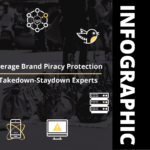Is IP crime falling in the UK?
To answer this we must first ask – how do you go about measuring IP crime? In fact, how is any crime measured?
Crime was traditionally measured by collating law enforcement records. Sounds simple. What if I call the police to report my purchasing of a counterfeit? Is this then recorded and measured to demonstrate the level of crime in society? Is it recorded as a single crime? Or do the police find the counterfeiter in question and count each infringing article in possession as a separate offence? Or do the police actually need to trace each sale to a customer to determine the number of offences?
Or what if we consider a pirate website – is each copyright protected work offered without authorisation a separate offence? Does it matter if no one ever accesses the infringing work? Is it only a crime in England and Wales if the viewer of the illicit works is subject to the jurisdiction of England and Wales? Or do the operators of the pirate website need to be subject to the jurisdiction to count as part of the stats?

There are countless variables, inaccuracies, and areas of subjectivity in the recording of crime. Depending on the circumstance, crime records may indicate the number of criminal acts or the number of victims. But to even get to this problematic position, crime must be identified by law enforcement. Either the police finding through intelligence or from reports by the public.
Back to my counterfeit example, what if I have little knowledge of the law and worry by reporting my purchase I would be arrested – how likely am I then to report this deception. And what about the OECD[i] estimated majority of counterfeit consumers who knowingly choose to purchase counterfeit – what are the chances they will report the infringing merchant? Buying a counterfeit is a transaction, the buyer is often complicit, there is no incentive for either party to inform the appropriate law enforcement agency. The same can be said of illicitly viewing a pirated film.
In terms of crime records, it is as if nothing ever happened. This concept is well understood by criminologists, referred to as the ‘hidden figure’ of crime. Or as Hetzer poetically labels “[the] underground and moonlight economy”.[ii] As such, crime records are regarded as merely an indication of the work undertaken by law enforcement, or a particular agency. For example, police records show the priorities of the police. From arrest to conviction requires a prosecutor to take on the case; the Crown Prosecution Service (CPS) in England and Wales. Conviction rates are therefore a subset of police priorities and the prosecutor’s own policy considerations. Both factors are parsed by budget controls and election cycles. Crime records record the work of the criminal justice system, not of criminals.
In an attempt to measure this hidden figure, to accurately measure the scale of criminality in a society, most countries moved towards survey data. Essentially, asking a large, representative sample of the population about their experiences of crime over a period of time. Typically the previous year. The survey approach is now the commonly accepted “more accurate measure of crime”.[iii] Such surveys are sometimes referred to as victimisation surveys. They work by asking the sample ‘have you been the victim of burglary, or assault, or any of the other crimes included in The Crime Survey for England and Wales.[iv] What becomes immediately apparent is that IP crime is still unlikely to get reported. The structure of the surveys fails to capture that it is the rightsholder who holds the right, and is therefore the victim. In many respects, a buyer of a counterfeit is closer to a perpetrator than victim. And the complicity issue remains.
But the final nail in the coffin of this approach is that most countries do not include IP crime as part of their crime survey. A survey cannot comprehensively measure all crimes. Respondents are asked about violent crime, drug offences, sexual offences and so on. The types of crimes which spring to mind when you think of the word ‘crime’. Respondents are also people, not IPR owning companies. So even if a question on IP crime was included, it would likely be significantly under-reported. Also, it likely would be poorly understood, as few people understand what IP crime actually is. Mischaracterising IP crime is a problem endemic within IP literature, for example, the IP Crime and Enforcement Report 19-20[v] discusses patents within IP crime – there are no criminal sanctions for patent infringement in England and Wales.
Regardless, victimisation surveys measure victimisation across a population. As Professor Tim Hope points out, crime is not evenly distributed.[vi] In fact, the distribution is heavily skewed against a minority – 20% of a population suffers 70% of the total victimisation in society. To put it simply, they are repeat victims. This skew occurs due to a variety of reasons. For example, an individual may unfortunately be a victim of a random violent assault; whereas, a domestic violence victim is likely to suffer repeatedly, being the victim of many assaults and other crimes. Compounding the issue, vulnerable victims are often the hardest to reach. Furthermore, victims of trafficking, slave labour and other forms of exploitation are often criminalised, rather than being recognised as victims.
To recapitulate, crime records are a generally inaccurate measurement of crime, a problem exacerbated by the nature of IP crime. Victimisation surveys are widely accepted as more accurate, but they don’t typically cover IP crime.
Okay, back to crime records it seems, as at least there is data in the UK. A welcome exception, as most countries do not provide any reliable IP crime stats. Through the UK IP Crime Group, we have access to criminal convictions under the Trade Marks Act 1994 (TMA) and the Copyright, Designs and Patents Act 1988 (CDPA), going as far back as 2002. The conviction stats apply to England and Wales, and only cover the two mentioned pieces of legislation. Under the TMA, section 92 lists the offences relating to the unauthorised use of trade marks.[vii] Section 107 of the CDPA covers “Criminal liability for making or dealing with infringing articles” in relation to copyright violations.[viii] Criminal sanctions for violations of registered designs are included in the Registered Designs Act 1949, but conviction figures under this act are not provided by the IP Crime Group Crime.
From 2002 to 2019, the average annual growth rate of convictions under the TMA is 1.1%. Meaning, on average, each year over the time period, there is a 1.1% rise in convictions for counterfeiting. Over the same period there has been a 6.1% fall in average yearly sanctions for copyright piracy. Aggregating both acts, there has been an average annual growth rate of 0.3% for IP crimes in England and Wales from 2002 to 2019.
The relatively small growth in IP crime seems out of sync with media reports on the issue. But it would be silly to draw conclusions solely from the conviction figures, for the many reasons stated above. Statistics on IP crime, or infringements which do not meet the criminal threshold, are not as robust as claimed. In this vacuum, almost anything can be asserted on the scale of IP infringement. The usual data to anchor the debate are missing. IP crime as a problem becomes whatever the loudest voice says it is. To a degree.
Back to the original question – is IP crime falling – maybe, we don’t know. Most sources insist IP crime is on the rise, the convictions data suggests it’s falling. Neither claim can be scrupulously made. Not with the currently available information. Crime stats alone are not sufficient. And it seems highly unlikely IP crime will be included in the Crime Survey for England & Wales. It is highly dubious whether that would help. What’s needed is a transparent victimisation survey. One which surveys the actual victims of IP crime – rightsholders. Responses must combine anecdotal evidence with verifiable data. Leading tech platforms could assist in providing data. A significant proportion of IP crime likely touches at least one major tech service in procuring or distributing infringing articles. Amalgamating crime stats with an appropriate survey and data from tech platforms, and then tracking results according to a consistent set of metrics over time is the only way to reliably comment on the scale of IP crime.
For more content covering IP crime from a criminological perspective, see:

[i] OECD and European Union Intellectual Property Office, ‘Trends in Trade in Counterfeit and Pirated Goods’, 2019, https://doi.org/10.1787/g2g9f533-en.
[ii] Hetzer, ‘Godfathers and Pirates: Counterfeiting and Organized Crime’, European Journal of Crime, Criminal Law and Criminal Justice 10, no. 4 (2002): 303–20, https://doi.org/10.1163/157181702761386151.
[iii] David P. Farrington et al., ‘Cross-National Studies in Crime and Justice: (312492005-001)’ (American Psychological Association, 2004), https://doi.org/10.1037/e312492005-001.
[iv] For more information about the survey see: https://www.crimesurvey.co.uk/en/index.html
[v] IP Crime Group, ‘IP Crime Annual Report 2019 – 2020’ (IPO, 2 September 2020), https://www.gov.uk/government/publications/annual-ip-crime-and-enforcement-report-2019-to-2020.
[vi] Tim Hope, ‘We Need a Different Crime Survey | Centre for Crime and Justice Studies’, accessed 15 July 2020, https://www.crimeandjustice.org.uk/resources/we-need-different-crime-survey.
[vii] Trade Marks Act 1994 s.92
https://www.legislation.gov.uk/ukpga/1994/26/section/92
[viii] Copyright, Designs and Patents Act 1988



